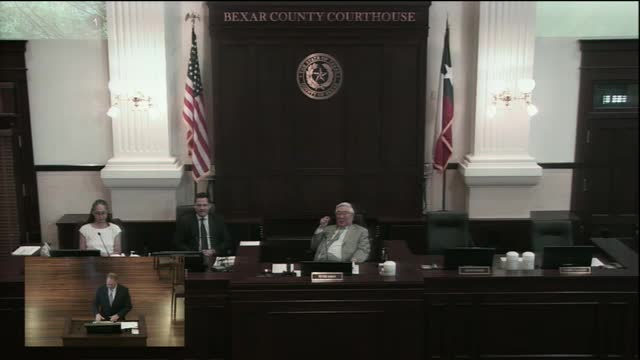City plans massive tree replacement to combat drought damage
August 29, 2024 | Bexar County, Texas
This article was created by AI summarizing key points discussed. AI makes mistakes, so for full details and context, please refer to the video of the full meeting. Please report any errors so we can fix them. Report an error »

In a recent government meeting, officials discussed the urgent need for tree and shrub replacement in light of ongoing drought conditions and the impact of freeze damage from past weather events. Since late 2020, the region has faced persistent drought, with 2022 recorded as the second driest year, receiving only 11.5 inches of rain. This has led to the loss of 199 trees over the past 18 months, averaging about 11 trees per month.
The meeting highlighted a plan to plant approximately 1,060 new trees to combat the significant rainfall deficit of 33 inches experienced from 2022 to 2023. Many of the existing trees are aging, with life expectancies ranging from 15 to 200 years, and some have historical significance dating back to the time of the Alamo. Specific species, such as hackberry and sycamores, are particularly vulnerable to drought and disease, while pecans and oaks have suffered from freeze damage.
To address these challenges, officials proposed planting drought-resistant species, including Monterey Oak, Bald Cypress, Redbud, crepe myrtles, and Texas mountain laurel. These selections aim to enhance local biodiversity and support pollinators like butterflies and bees. The initiative will involve consultations with tree experts to ensure appropriate species selection and planting density.
The city aims to achieve a 40% tree canopy coverage, similar to that of San Antonio, to mitigate the urban heat island effect, which can make city areas significantly warmer than surrounding rural regions. The cost of planting trees varies, ranging from $150 to $1,500, depending on size and type. Mature trees can produce substantial oxygen, with one tree generating about 274 liters daily, which is nearly half of what an average human requires.
Key planting locations include Mission Park, Woodlake, and various precincts, particularly where tree losses have been most pronounced, such as Bullis Park. The meeting underscored the importance of proactive measures to restore and enhance the urban forest, ensuring a healthier environment for the community.
The meeting highlighted a plan to plant approximately 1,060 new trees to combat the significant rainfall deficit of 33 inches experienced from 2022 to 2023. Many of the existing trees are aging, with life expectancies ranging from 15 to 200 years, and some have historical significance dating back to the time of the Alamo. Specific species, such as hackberry and sycamores, are particularly vulnerable to drought and disease, while pecans and oaks have suffered from freeze damage.
To address these challenges, officials proposed planting drought-resistant species, including Monterey Oak, Bald Cypress, Redbud, crepe myrtles, and Texas mountain laurel. These selections aim to enhance local biodiversity and support pollinators like butterflies and bees. The initiative will involve consultations with tree experts to ensure appropriate species selection and planting density.
The city aims to achieve a 40% tree canopy coverage, similar to that of San Antonio, to mitigate the urban heat island effect, which can make city areas significantly warmer than surrounding rural regions. The cost of planting trees varies, ranging from $150 to $1,500, depending on size and type. Mature trees can produce substantial oxygen, with one tree generating about 274 liters daily, which is nearly half of what an average human requires.
Key planting locations include Mission Park, Woodlake, and various precincts, particularly where tree losses have been most pronounced, such as Bullis Park. The meeting underscored the importance of proactive measures to restore and enhance the urban forest, ensuring a healthier environment for the community.
View full meeting
This article is based on a recent meeting—watch the full video and explore the complete transcript for deeper insights into the discussion.
View full meeting
